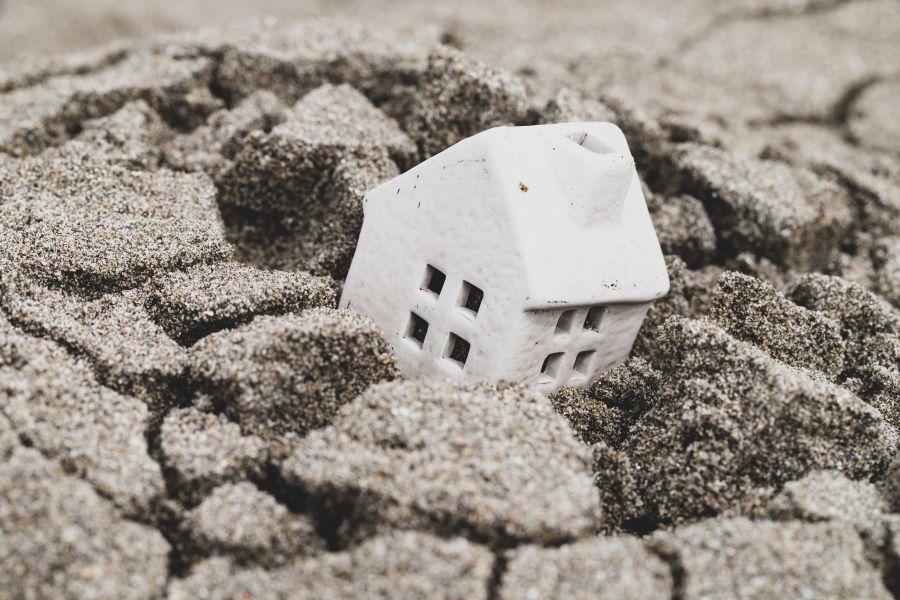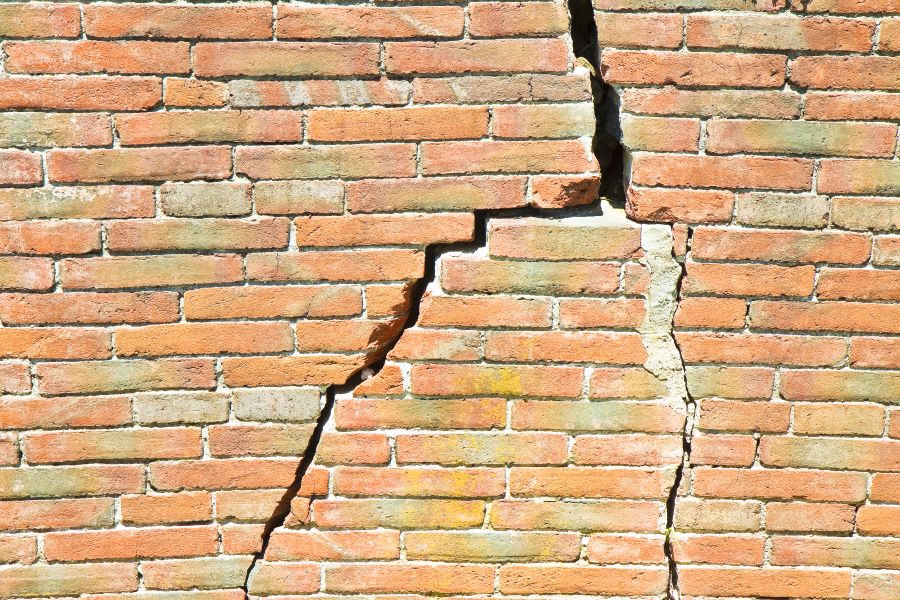Subsidence Survey: Causes, Signs, Costs & Actions
Subsidence is a concern for property owners, affecting the structural integrity of buildings and potentially leading to significant repair costs. Understanding subsidence, its causes, and solutions is crucial for maintaining property value and safety. This article explores the importance of subsidence surveys conducted by professionals like Harding Chartered Surveyors in identifying and addressing subsidence issues.
What causes Subsidence?
Subsidence, the gradual sinking of land causing buildings to settle or shift, can be triggered by various factors. The primary cause of subsidence is often the soil beneath a property, especially clay soil, which can expand and contract based on moisture levels. Other contributing factors include:
- Leaks from drainage or water supply services can wash away or soften the ground beneath.
- The influence of environmental factors, such as nearby trees whose roots may draw moisture from the soil.
- Mining activity or other ground movement affects the stability of the soil and, consequently, the foundations of buildings.
Understanding these causes is vital for diagnosing subsidence and implementing effective remedial measures.

What Are the Signs of Subsidence?
Identifying subsidence early can prevent more severe damage. Signs include:
- Cracks in the walls, especially those diagonal and broader at the top.
- Doors and windows were sticking due to frame distortion.
- Visible changes in the level or position of floors or foundations.
- Rippling wallpaper that isn’t caused by dampness.
What Is a Subsidence Survey?
A subsidence survey is a thorough investigation by a Chartered Surveyor or Structural Engineer to determine whether subsidence is present and assess the extent of the movement. This process may involve visually inspecting the property, level surveys, and possibly drain surveys to identify leaks affecting soil stability. The surveyor will produce a subsidence report detailing the findings and recommending remedial actions.
How Much Does a Subsidence Survey Cost?
The cost of a subsidence survey can vary from £700 upwards based on the property size, location, and the survey's complexity. While specific prices may require direct consultation with surveyors, investing in a professional evaluation is essential for any homeowner suspecting or suffering from subsidence.
Subsidence Survey Quotation
Please click "Other Services" and "Subsidence Survey" to get a free quotation from one of our Surveyors. We cover Greater London and the home counties.

How Harding Chartered Surveyors Can Check for Subsidence?
Harding Chartered Surveyors, with their expertise in building surveys and structural integrity assessments, play a crucial role in identifying subsidence issues. By conducting detailed inspections like RICS level 2 and level 3 surveys, they can diagnose subsidence and provide advice on the best course of action. Their approach includes evaluating the influence of environmental factors and thoroughly assessing the property's condition. However, if the subsidence is more severe or complex in nature, then a structural engineer may be required instead.
Is Subsidence covered by insurance?
The inclusion of subsidence damage in insurance policies varies with each insurer and the particulars of the policy. Subsidence repair costs are frequently covered under home and commercial property insurance, yet it is essential to examine your policy's details or refer to the Financial Ombudsman's website for further information.
How to Reduce the Risk of Subsidence?
Preventive measures can significantly reduce the risk of subsidence, including:
- Monitor and repair any leaks from below-ground drainage or water supply services promptly.
- Managing tree planting and vegetation around the property to avoid excessive soil drying.
- Regular maintenance and inspections to catch early signs of ground movement or structural distress.
Can I Sell a House with Subsidence?
Selling a house with known subsidence issues is possible, but it may affect the property's value and attractiveness to buyers. A detailed subsidence report by a chartered surveyor can provide transparency and outline remedial measures, potentially making the property more marketable for a potential homebuyer.
How Underpinning Can Help with Subsidence
Underpinning is a foundational reinforcement technique crucial for addressing subsidence issues in buildings. Subsidence, the downward movement of the ground beneath a property, can lead to significant structural damage if not addressed promptly. Underpinning offers a reliable solution by stabilizing the foundation, ensuring the building's longevity and safety.
This process involves extending the depth or breadth of the existing foundation to reach more stable soil or distribute the building's load across a larger area. By doing so, underpinning counters the effects of subsidence by transferring the structure's weight to firmer ground, mitigating further movement and stabilizing the property.
One of the key benefits of underpinning is its ability to address various causes of subsidence, including clay soil expansion and contraction, water leakage that washes away soil, or the erosion of ground due to environmental factors. It's a versatile solution that can be tailored to each property's specific needs and conditions.
Moreover, underpinning resolves current subsidence issues and acts as a preventative measure against future subsidence risks. By reinforcing the foundation, it enhances the structural integrity of the building, potentially increasing its value and ensuring that it remains safe and secure for occupancy.
Conclusion
Should there be concerns about a property potentially experiencing subsidence, a surveyor, typically certified by the Royal Institution of Chartered Surveyors (RICS), is qualified to carry out a subsidence assessment during either a RICS level 2 or level 3 Building Survey. For a more detailed examination, a structural engineer may be enlisted. This process encompasses a visual inspection of the premises to pinpoint possible sources of subsidence harm, including leakage from subterranean drainage or the effect of adjacent trees extracting moisture from the soil beneath the property.
The process may require a complete building survey, especially for cases of suspected or intrusive subsidence, where a more thorough survey is necessary to ascertain the extent and cause of the subsidence. A structural engineer's report may be required to offer a detailed analysis and recommend remedial measures to stabilize the structure of a building. This can involve underpinning the foundations of your home to address issues caused by the soil or other factors leading to ground movement beneath your property.
The survey report will identify the possible cause of subsidence damage and outline the necessary steps that may need to be taken, including the initial appraisal of the risk and potential remedial actions to mitigate any further damage. In doing so, it offers peace of mind to homeowners and buyers, affirming that proactive measures have been taken to protect the property and its occupants.
Subsidence poses a significant risk to buildings, but with the proper knowledge and professional support from entities like Harding Chartered Surveyors, property owners can navigate these challenges effectively. By understanding the causes, signs, and solutions for subsidence, including the crucial role of subsidence surveys, homeowners can take proactive steps to protect their investments and ensure their properties remain safe and stable for years.

